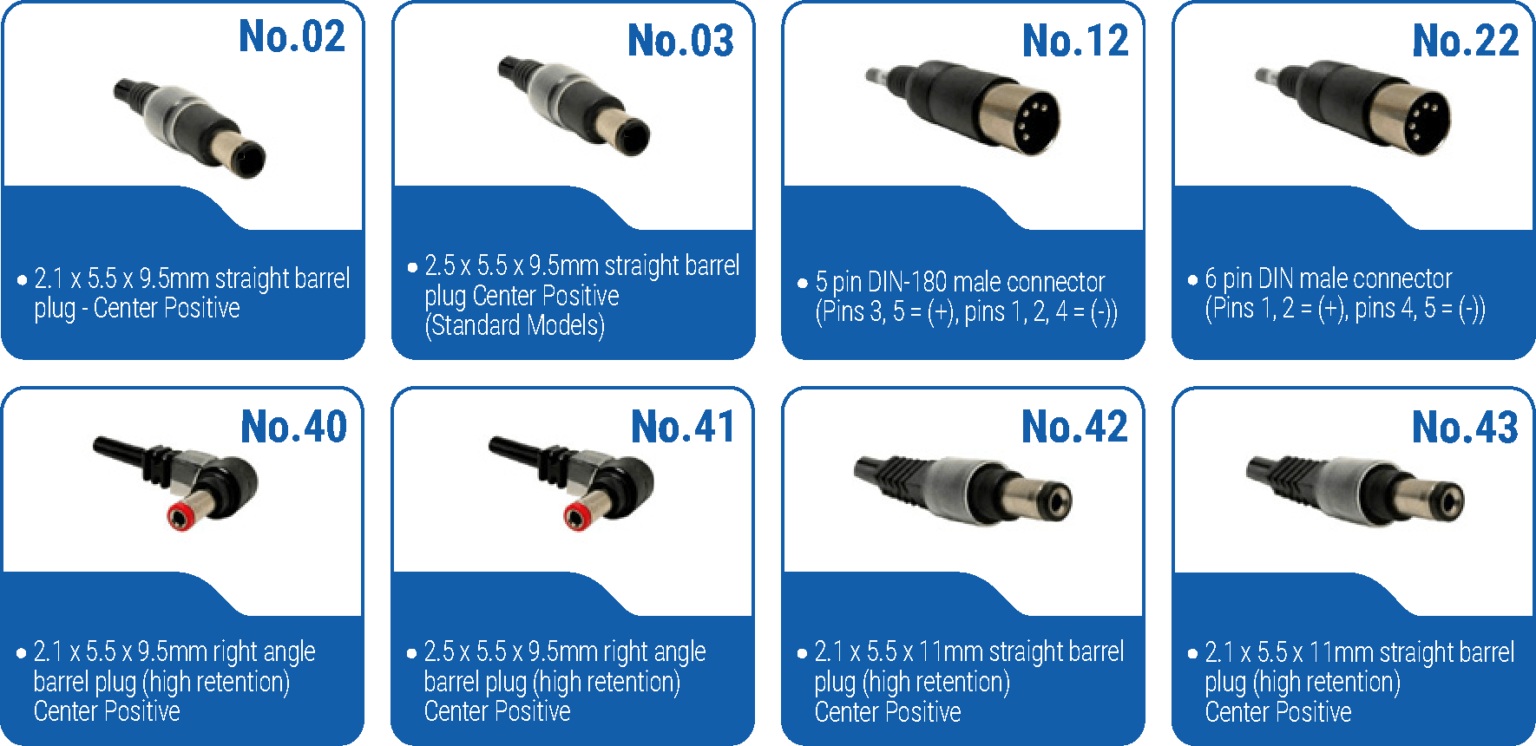9 Things To Consider When Choosing A Power Supply
Veröffentlicht Januar 25, 2022 von Advanced Energy Editor
A napkin drawing is a good way to capture all the details you need in a power supply before choosing a power supply. As we can see below, the main consideration is the specifications. Consider the power supply to be a black box, with the input parameters being on the left side, and output parameters being on the right side, and the other parameters of the power supply in the box.
Let’s get into the each of these specification parameters one by one.
- AC input voltage range (Vin) – This is the range that your power supply needs, such as single-phase AC or three-phase AC. The designer needs to know the AC input voltage range of the application, to know what power supply to pick. The universal AC input voltage range for most systems are between 85~264 Vac, 47 to 60Hz. AC-DC power supply also comes with interchangeable blade kits, which can be switched easily to work in the country of your choice, such as Australia, UK, South Africa, China, Brazil, and so on. The. The other type of AC-DC power supply is the fixed blade, which just caters to one fixed ac input voltage range. It can be a desktop mount, or a wall mount based on your application needs.

- Output voltage range (Vout) – This would be the range that you would need for your output voltage. For example, in an LED or test and measurement application, you may require an adjustable output voltage range. In that case, choosing an AC-DC power supply that has a variable output range feature, saves time and money. In other cases, you would need a fixed output voltage, such as 48V, 12V, and so on. Below are some connector options power supply offer to choose from.

- Maximum output current (Iout) – It is important to know the absolute maximum output power that you need from the AC-DC power supply, as there are applications, where the output current fluctuates a lot. In cases like these, there are power supplies that can be paralleled for more power. Our webinar on Paralleling and Redundancy has more information on this, if you need more information on this.
- Output regulation / ripple – Some applications would cause the power supply to have higher output ripple, and output current to fluctuate a lot. This is mainly due to the type of load such as motor drives. Some questions to ask yourself is if you require a regulated output, what level is tolerable for your application, and so on. This can be seen on the datasheet electrical specification.
- Space/dimensions – Considering the fact that power supplies are becoming more and more compact, one question to ask yourself is if you have enough space in your application to fit the power supply, if you have extra space for paralleling supplies for higher power, if there is space to fit in a fan or conduction plate for cooling the power supply, and so on.
- Enclosure/cooling/fan – Does your power supply require an enclosed fan, or do you require conduction cooling, or an external fan to keep the module cool? Many power supplies have features called the over temperature protection, which helps to shut down the power supply to prevent further damage due to overheating. General practice it to keep the module as cool as possible for best results.

- Temperature grade – Can the supply withstand the harsh temperature conditions such as -40C, or up to +50C? There were cases of electric cars that could not start up in peak winter across different parts of the country. So, you need to consider if your power supply will remain functional at those extreme temperatures. The electrical specifications of the datasheet can help find this information.
- Derating: The environment will affect the power supply to some extent, causing some power to be lost, this is called derating. Altitude and temperature are some factors affecting the derating.
- Standards to meet – Some applications require you to meet certain specifications, such as 60601, IP20, IP22, and so on. What does your application need? Some products are tested to certain standards based on common customer needs. Check your application, before choosing the power supply. Some products commonly have UL, TUV, EN, and so on built into the power supply.
These are just some of the parameters that are important to help you choose the right power supply for your application. Ultimately, it depends on your final application, and what parameter is most important to you when choosing the power supply. Feel free to contact us for further information or even just for knowledge exchange.
